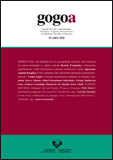Goi-datiboak eta are goragokoak euskaraz: jabe datiboak eta datibo hunkituak vs. datibo etikoak
##plugins.themes.bootstrap3.article.main##
##plugins.themes.bootstrap3.article.sidebar##
Argitaratua
2011-10-28
Beatriz Fernández
Laburpena
Nola aipatu
Fernández, B. (2011). Goi-datiboak eta are goragokoak euskaraz: jabe datiboak eta datibo hunkituak vs. datibo etikoak. Gogoa, 10(1-2). https://doi.org/10.1387/gogoa.3484
##plugins.themes.bootstrap3.article.details##
Zenbakia
Atala
Artikuluak

